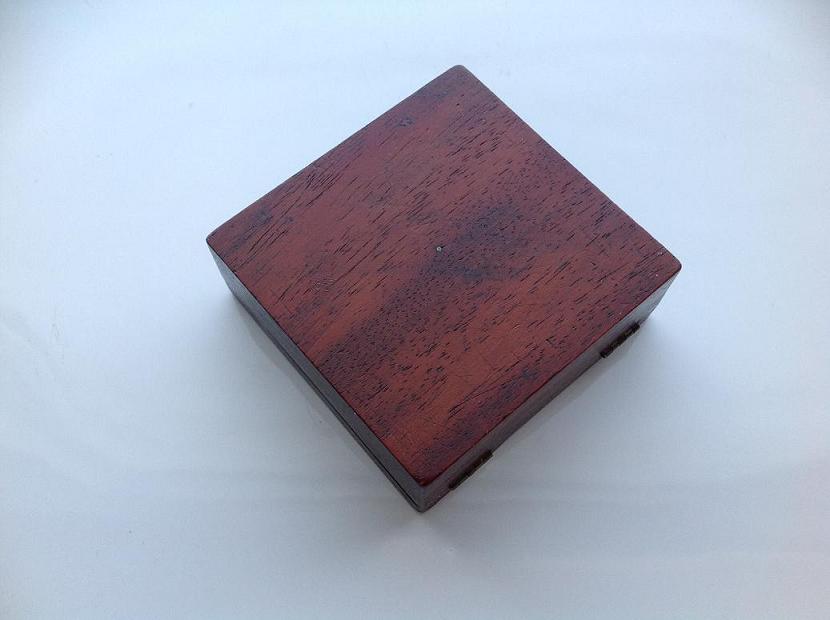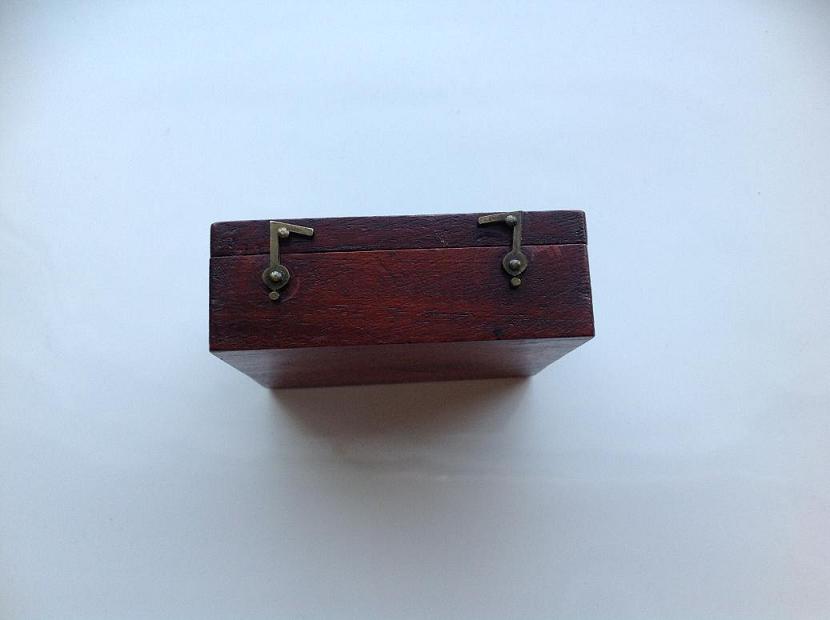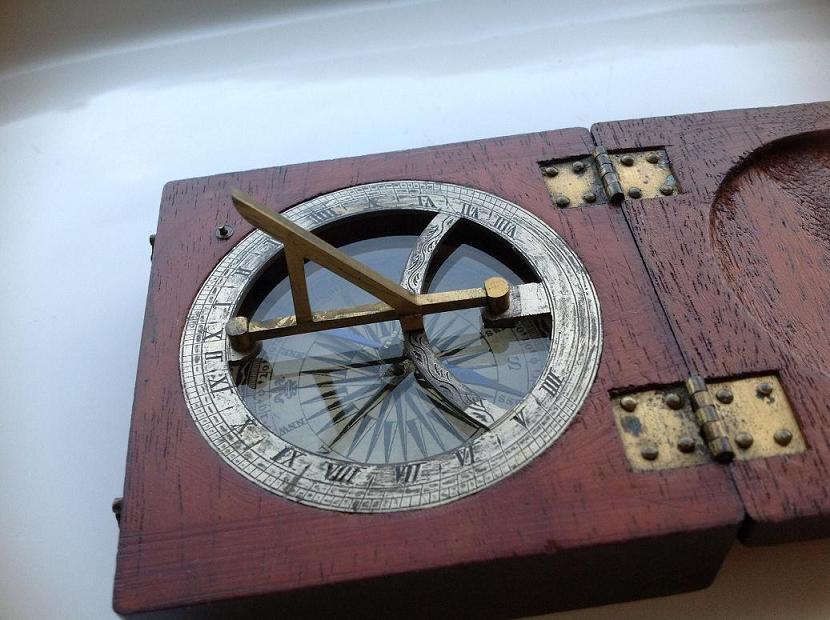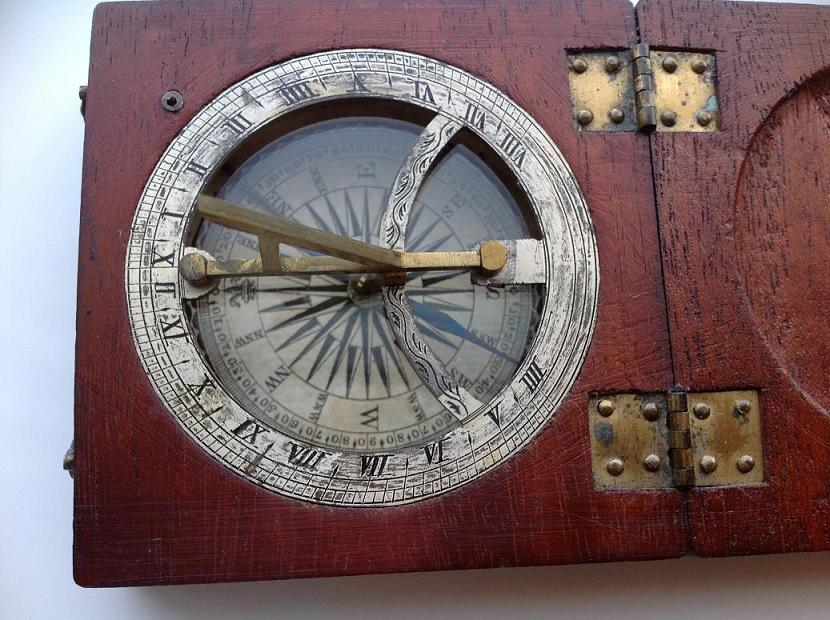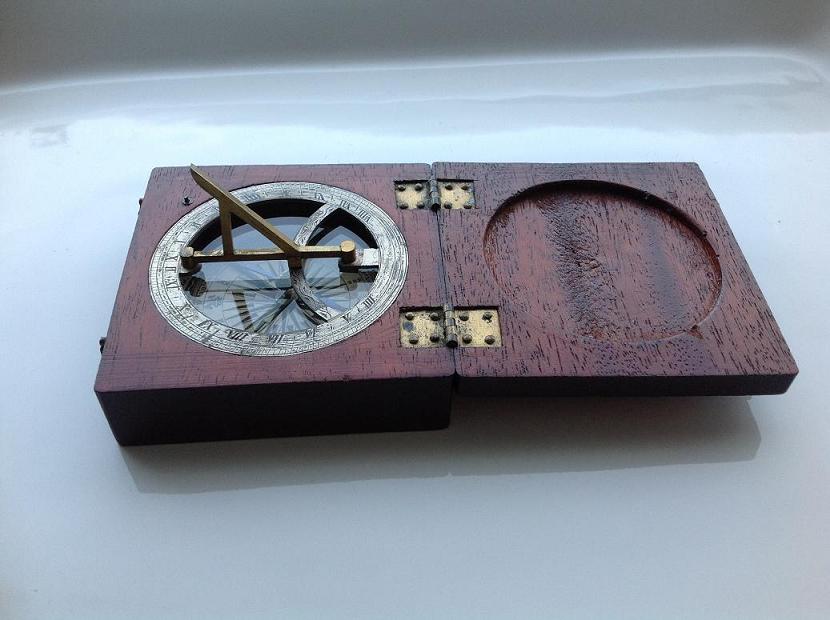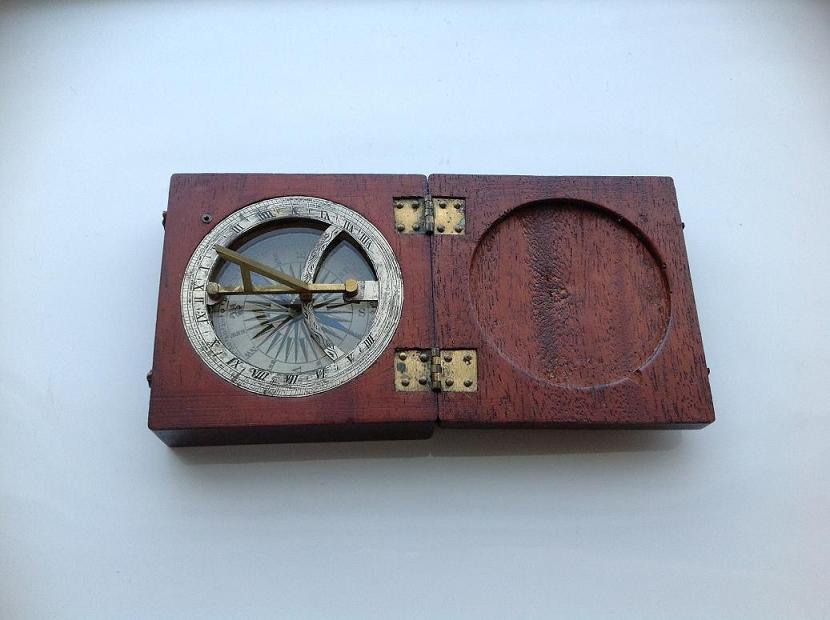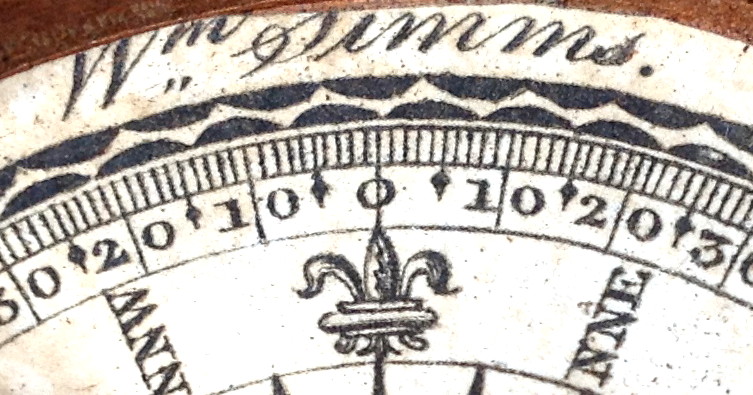
Code BA12111065: Early 1800 Wooden English Sundial and Compass by William Simms of London
|
This an extremely rare sundial compass dating from around 1820. It is housed in a mahogany case still in excellent condition with a strong hinges. No damage. The hooks are present and work fine to secure the lid when closed. The gnomon is yellow brass. It must be unfolded to read the solar time on the circular ring above the glass crystal that covers the compass. The glass crystal and gnomon are in excellent condition without any damage. The compass has a flat needle with a crown shaped brass cap. It is engraved N and S corresponding to North and South respectively. The dial has a typically nautical design with a nice compass rose and is signed by maker name: Wm Simms. It points North with precision and there is a transit lock that comes into operation when the lid is closed. The size of this rare and quality example is 76 mm square by 27 mm deep.
About William Simms (source: Wikipedia) Early lifeHe was born in Birmingham, the second of nine children of William Simms (1763-1828), an instrument maker. Soon after William Simm's birth the family moved to London so that William Simms Sr. could his ailing father, James Simms, who had a jewellery business in Whitecross Street. This business was soon converted to the manufacture of optical instruments. William Sr. prospered and in 1804 he was elected a Freeman of the City. William Simms Jr. was sent in January 1806 to be educated in mathematics by a Mr. Hayward. After two years education in January 1808 he was apprenticed to Thomas Penstone, a member of the Worshipful Company of Goldsmiths. However William's interests lay elsewhere and in 1809 he was apprenticed to a Mr. Bennett, a former employee of Jesse Ramsden. CareerHe was elected a Freeman of the Worshipful Company of Goldsmiths in 1815 and set up in business for himself, working until 1818 at his father's Blackfriars premises. His elder brother James was already establishing his own reputation for navigational instruments. William Simms' chief interest was the division of the circle, the accuracy of which was essential to the manufacture of accurate scientific instruments. He became a correspondent of Thomas Jones, who brought him into contact with the instrument maker Edward Troughton and also persuaded him to join the Royal Society for the encouragement of Arts, Manufactures & Commerce. Here he met the engineer Bryan Donkin, and also Colonel Colley of the Ordnance Survey. Simms became Troughton's partner in 1826 and on his retirement took over his business, which had a very good reputation in the manufacture of scientific instruments. Simms specialized in surveying instruments and from 1817 supplied theodolites to the Ordnance Survey and then to the East India Company, including those used by George Everest. On a larger scale he supplied telescopes, mural circles and other astronomical instruments to observatories at Krakow, Madras, Cambridge, Lucknow, Calcutta, Edinburgh, Brussels, Greenwich and other places. By the close of his career he had supplied most of the world's leading observatories with equipment. Simms' work formed the basis of the treatise on mathematical instruments written by his younger brother Frederick Walter Simms, who went on to become an important writer on civil engineering. His reputation was enhanced by the improvements he made to graduating instruments and his self-acting circular dividing engine reduced the work involved in manufacture from weeks to hours. He also helped standardize the measures of length the yard and chain for the Admiralty. Simms was elected an Associate of the Institution of Civil Engineers in 1828. He was a Fellow of the Royal Astronomical Society, which he joined in 1831, and elected a Fellow of the Royal Society in 1852. Simms died at the family home in Carshalton on 21 June 1860 and was buried at West Norwood Cemetery. His family, most especially his son James Simms carried on his instrument making work.
|
SOLD





